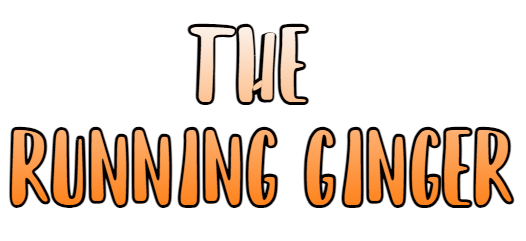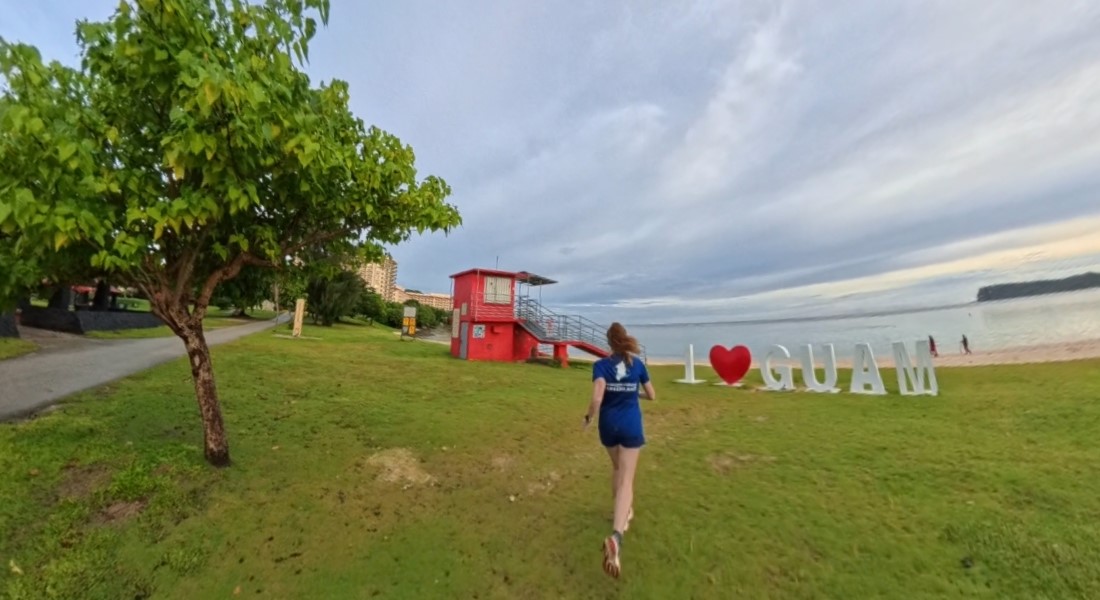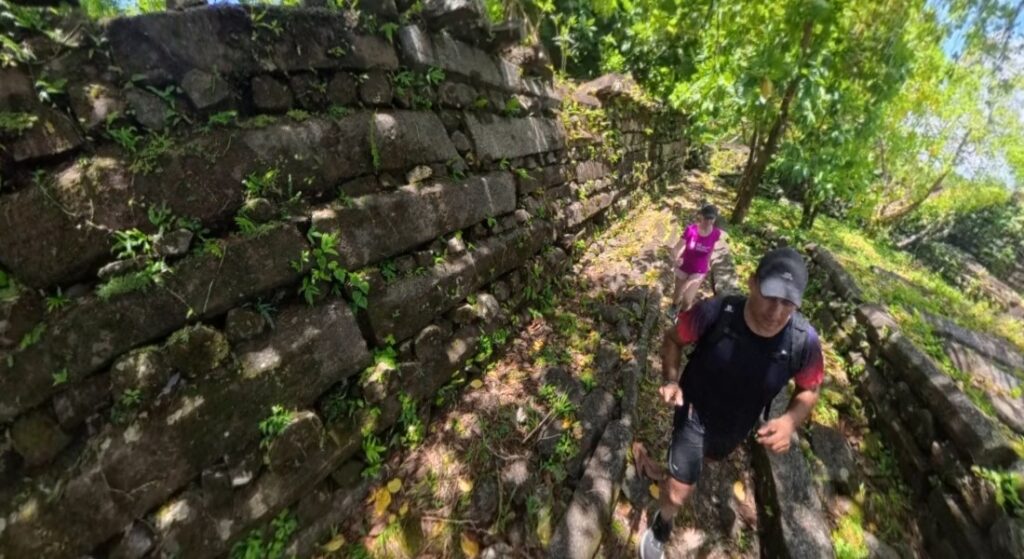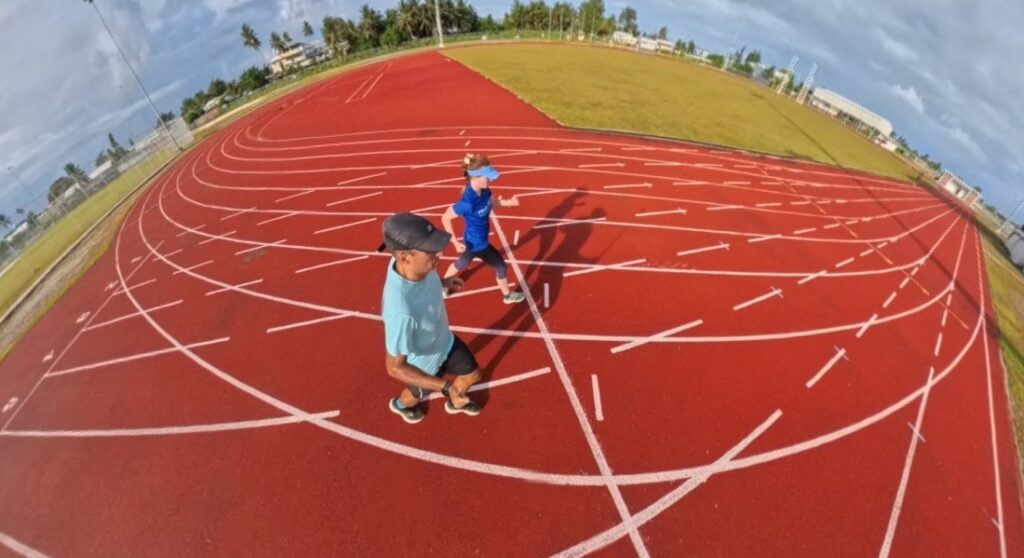Guam, 17th of September 2025.
Guam amazed us with its mix of natural beauty, history, and culture. From Tumon Bay beaches to Two Lovers Point cliffs, vibrant local cuisine, and Chamorro heritage, every moment offered discovery, relaxation, and tropical charm in a uniquely American-Pacific island setting.
And here, we ran 7 kilometers along Tumon Bay and Ypao Beach in Guam, discovering soft white sand, turquoise waters, lush greenery, and even a hidden Japanese World War II pillbox. Early morning low tides and calm reef-protected waters made the run smooth, scenic, and unforgettable.Guam is an island gem in the Western Pacific—an idyllic mix of sun-drenched beaches, volcanic hills, and lush forest paths. Imagine greeting the sunrise as you jog along Tumon Bay, the ocean shimmering beside you. Picture conquering a volcanic incline, then cooling off in a hidden waterfall pool.

TLDR; “too long, didn’t read”
- I just want to run! Take me to RUN.
- I have 1 minute. Take me to USEFUL INFORMATION.
- Running is my excuse for travelling. Take me to TRIP.
- Running is my excuse for eating. Take me to CARBOLOADING.
- I want to know what to read in the plane. Take me to ONE BOOK.
✨ Why Guam Should Be on Every Runner’s Bucket List
If you’re chasing memorable miles, Guam has everything you need: scenic routes, tropical climate, and experiences that turn every run into an adventure. 🏃♂️🌞
If you want it in a list, here it is!
- Perfect weather: Warm temperatures all year, with refreshing rain showers. Ideal for sweat-loving runners.
- Varied terrain: From flat coastal promenades to volcanic ridges and jungle trails. Every run here tells a story.
- Culturally rich: Routes pass by WWII relics, ancient Chamorro sites, and local villages. It’s running through history.
🌍 The Trip 📷
Before diving into Guam’s best running routes and sightseeing highlights, it’s worth appreciating how deeply layered this island’s story is, especially for travelers who love history, culture, and a good uphill sprint.
Guam isn’t just a tropical escape in the Western Pacific; it’s a place where centuries of influence, from native Chamorro traditions to Spanish colonial rule, are still woven into everyday life. Spanish explorers arrived in 1521, and Guam remained a Spanish colony for over 300 years until it was ceded to the United States after the Spanish-American War in 1898. T
Today, you’ll find echoes of that era in everything from place names (like “Hagåtña,” formerly Agana) to architecture, religious festivals, and cuisine.
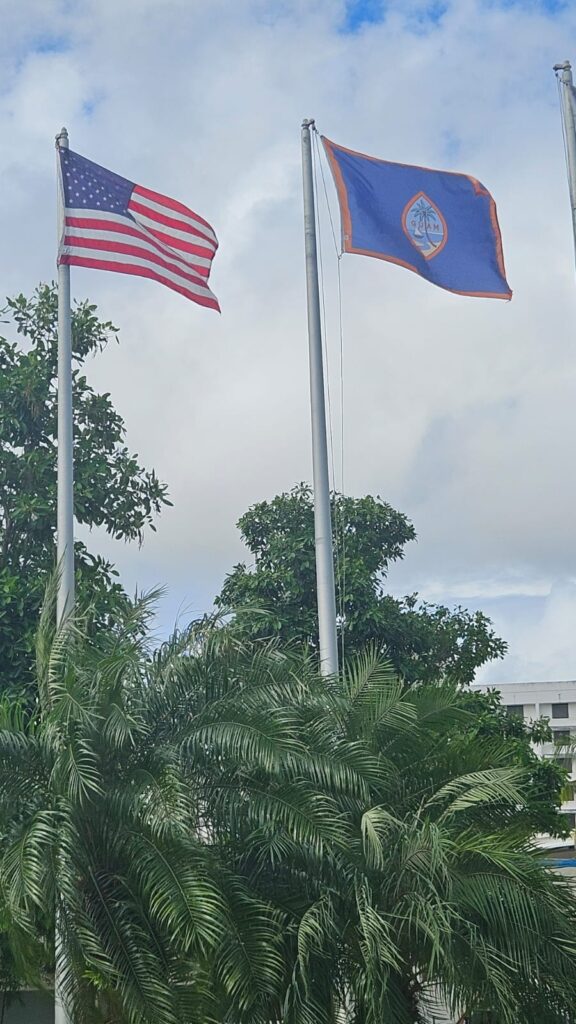
This fusion of Spanish, Chamorro, American, and Pacific Islander influences makes Guam especially fascinating for travelers who run to experience a place more deeply. You might be pacing through an old Spanish-era village, past a centuries-old church, or alongside cliffs first mapped by Magellan’s fleet.
Guam isn’t just about beaches, it’s also about stories, survival, and a cultural blend you won’t find anywhere else in the world. Whether you’re racking up miles or just wandering with your eyes wide open, Guam is as enriching as it is beautiful. Let’s start with why every runner should have this island on their bucket list. 🏃♂️🇪🇸🌺
📜 A Brief Story of Guam
“La isla de Guam”
Funnily enough, as a Spanish traveler, I found a unique connection to Guam that sets it apart from many other Pacific destinations.
The island was first “discovered” by Europeans in 1521 when Ferdinand Magellan, on his famed circumnavigation of the globe, landed on Guam. Just a few decades later, Spain formally claimed the island, and Guam became a vital stop on the Manila Galleon trade route that linked the Philippines and Mexico.
For more than three centuries, Guam was the southernmost part of the Spanish Empire, serving as a Catholic missionary outpost and a strategic port in the vast Pacific. Spanish colonial churches, plazas, and place names still survive today, blending with Chamorro culture to create a fascinating hybrid identity.
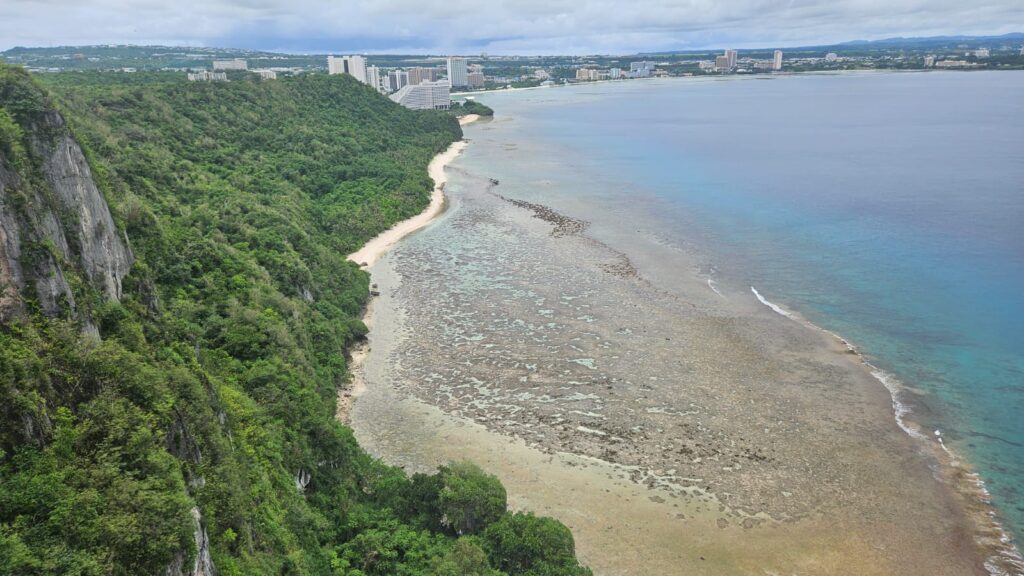
Visiting Guam as a Spaniard isn’t just a trip to a tropical paradise. It’s a journey into a little-known chapter of our own history, one that played out thousands of miles from the Iberian Peninsula yet left a lasting legacy.
During the Spanish colonial period, Guam was officially known as “Isla de Guam”, and sometimes referred to more broadly as part of “Las Islas Marianas” (The Mariana Islands), named in honor of Queen Mariana of Austria, the widow of King Philip IV of Spain. The name was bestowed in the late 17th century by Jesuit missionaries and colonial authorities who sought to Christianize and integrate the islands into the Spanish Empire.
So while “Guam” itself retained its native Chamorro name (derived from “Guåhan,” meaning “we have”), it was administratively and geopolitically considered part of “Las Marianas” under Spanish rule. Spanish colonial records, missionary writings, and maps from the 17th to 19th centuries refer to it this way, often alongside its sister islands like Saipan and Tinian.
World War II
Guam’s story is deeply rooted in World War II. After the Japanese invasion in December 1941, the island remained under occupation until July 1944. The Battle of Guam was a turning point in the Pacific War. U.S. forces fought fiercely to reclaim the island, liberating it from foreign control. Today, remnants like gun emplacements, caves, and memorials around the island stand as solemn markers of that tumultuous period.
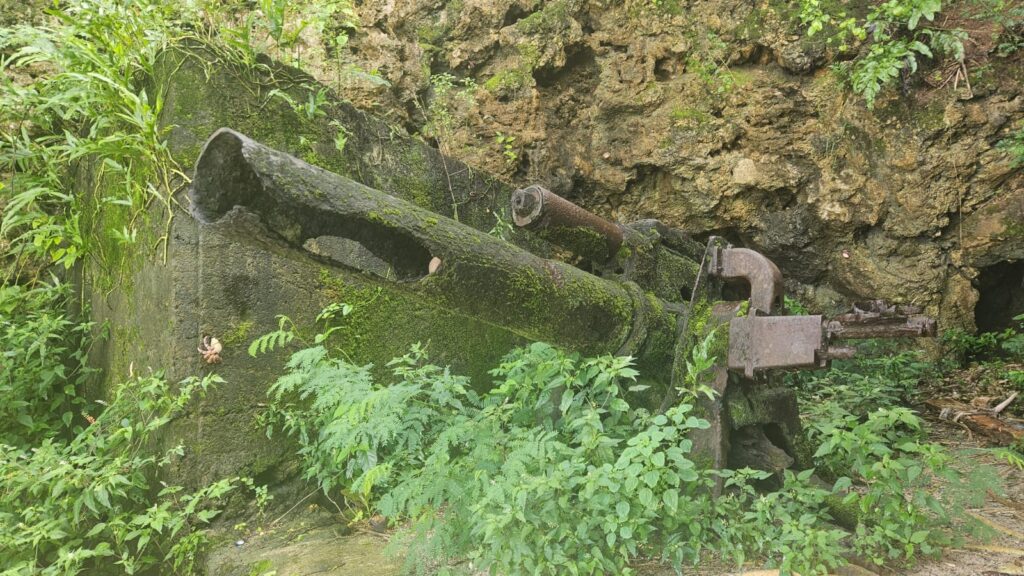
But behind the battle scenes lies a story of survival and cultural endurance. Chamorro families endured forced labor, food shortages, and displacement. Many were interned or made to work on military installations. After liberation, their resilience became the foundation for Guam’s post-war recovery and cultural renaissance.
Visiting these historic sites gives runners a deeper appreciation for each trail and beach path—not just as exercise routes, but as landscapes shaped by sacrifice and resilience.
Arrival in Guam: First Impressions ✈️
We arrived while there was still light, seeing many military bases from the air. I took a picture.
Later I learned it was Apra Harbor, Guam’s deep-water port and an important U.S. military base.
Guam from the air looked modern and super green. Dense vegetation spread across the island, with roads connecting suburbs or bases.
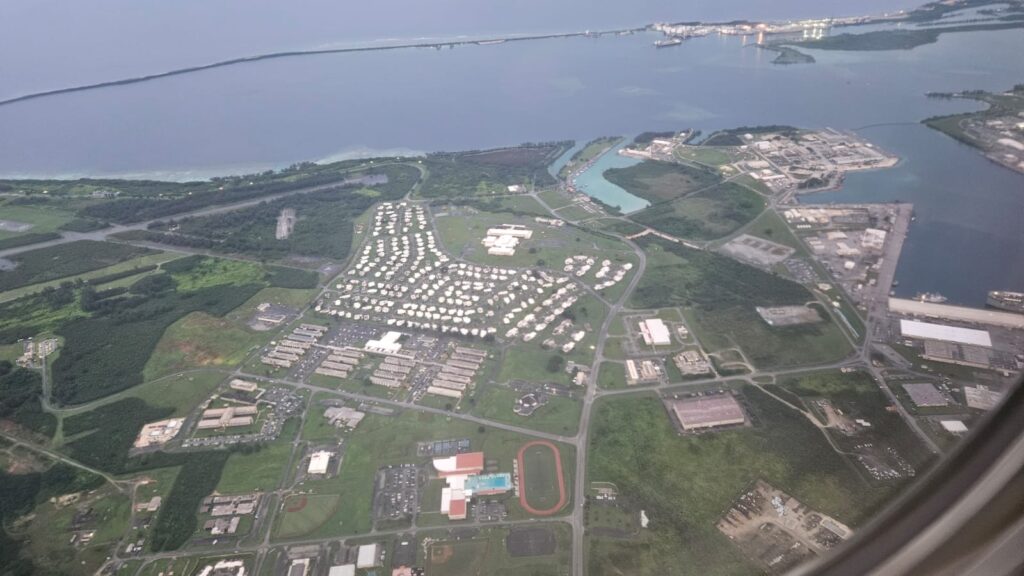
Approaching the coast, tall hotels lined the shoreline. One of them, Guam Reef, would be our stay.
Customs and immigration went smoothly. I cleared easily, Roger struggled recalling our previous islands.
We filled an electronic customs declaration with nothing to declare. The officer seemed surprised we came from Europe.
A driver from Guam Reef picked us up. Even in the dark, Guam’s big roads and American vibes were clear.
Flags, pickup trucks, and 25-hour restaurants made the island feel very different from other Pacific countries we visited.
Exploring Guam’s Food and Culture 🍴
Breakfast at the hotel introduced us to Pancit Bihon, a delicious Philippine dish.
Guam shares historical and cultural ties with the Philippines, reflected in its cuisine and local population.
Filipino dishes like adobo, lumpia, and pancit blend with Chamorro flavors, creating a unique culinary experience.
At breakfast, we noticed most tourists were Japanese or Korean, explaining multilingual shop signs in English, Japanese, and Korean.
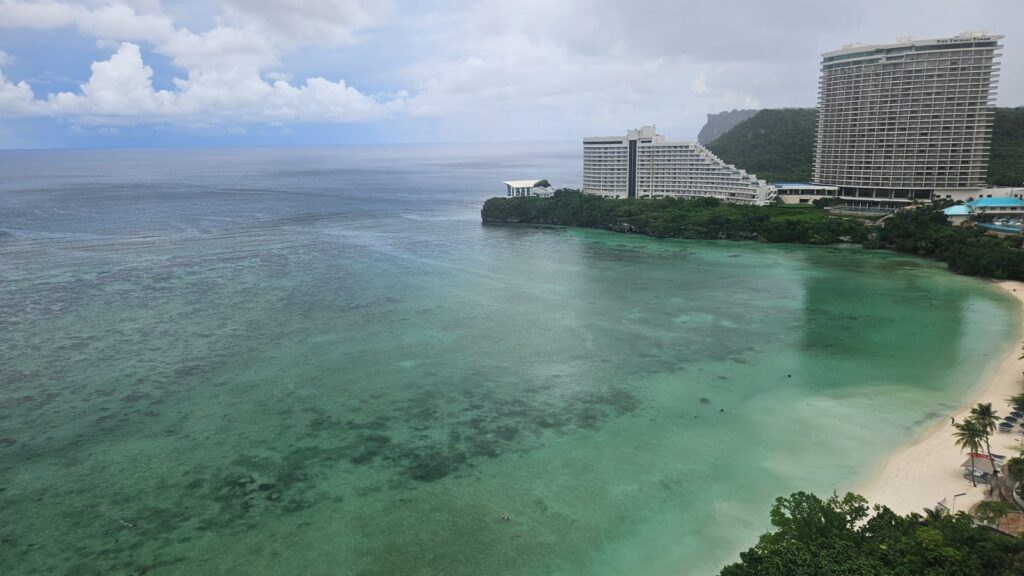
Restaurants catered to Asian tourists, including sushi and Korean fried chicken chains. The island’s marketing draws vacationers seeking beaches and shopping.
We focused on non-military areas, yet the military presence was felt through overhead planes and jets.
Highways dominate Guam, with few pedestrians. Borrowing an umbrella from the hotel improved our sunny-day sightseeing.
Tumon Beach hotels offered early-morning charm. We discovered a chocolate shop with handmade turtle magnets and free treats.
Scooter rentals were expensive, but Roger enjoyed a short ride while I sipped pink lemonade in the shade.
Tumon and Gun Beach Adventures 🏝️
We visited a small memorial to Chamorro culture, featuring latte stones symbolizing pre-colonial heritage.
The site reflected family, community, and island traditions, offering insight into Guam’s rich history.
Next, we explored Gun Beach, a hidden gem north of Tumon Bay. The sand was golden, water turquoise, and cliffs dramatic.
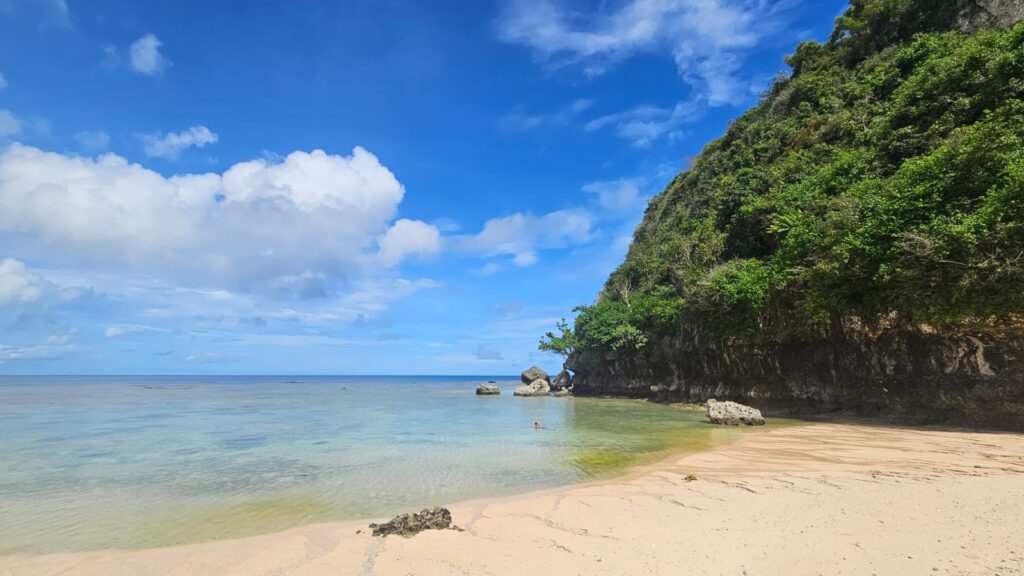
The beach features a rusted World War II naval gun, a haunting reminder of Guam’s history.
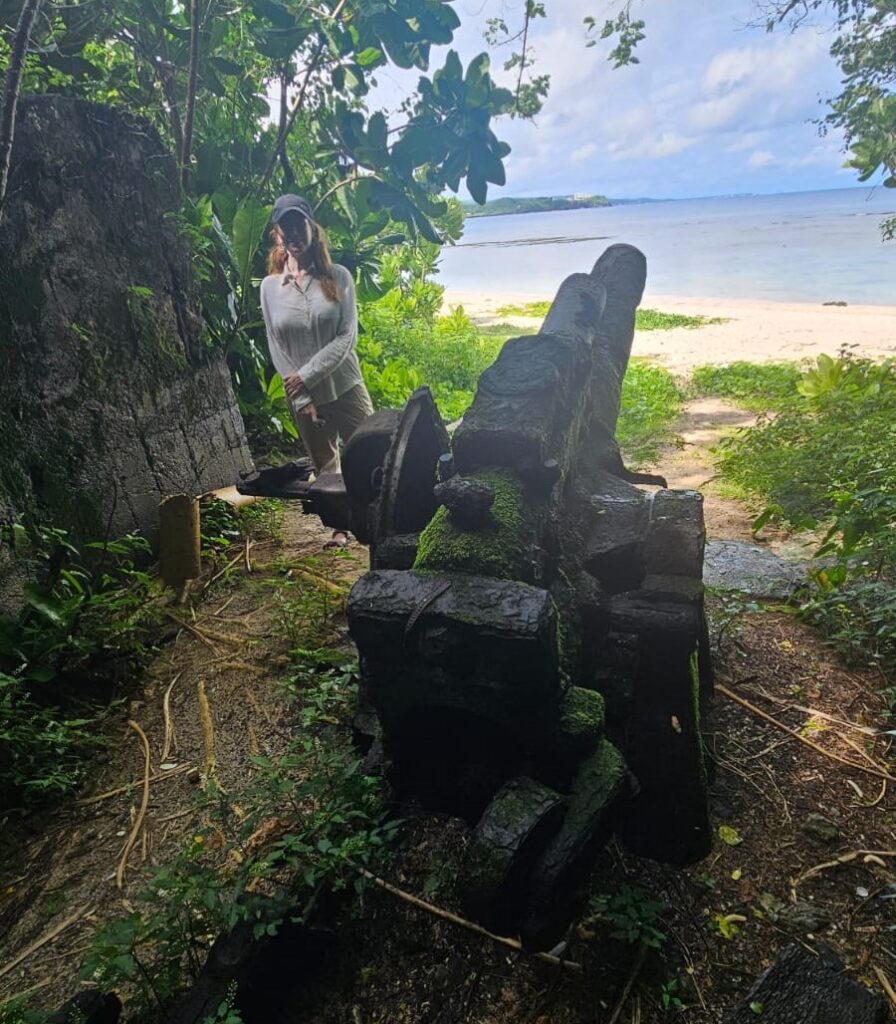
Early mornings offer quiet snorkeling with coral gardens and schools of tropical fish. It feels like a private paradise.
Walking under the sun, our umbrella kept us cool, and we explored paths with caution around private property signs.
Two Lovers Point: Legendary Views and Culture ❤️
We took a taxi to Two Lovers Point, a cliffside lookout with panoramic views of the Philippine Sea.
The legend of star-crossed lovers gives the site cultural and romantic significance.
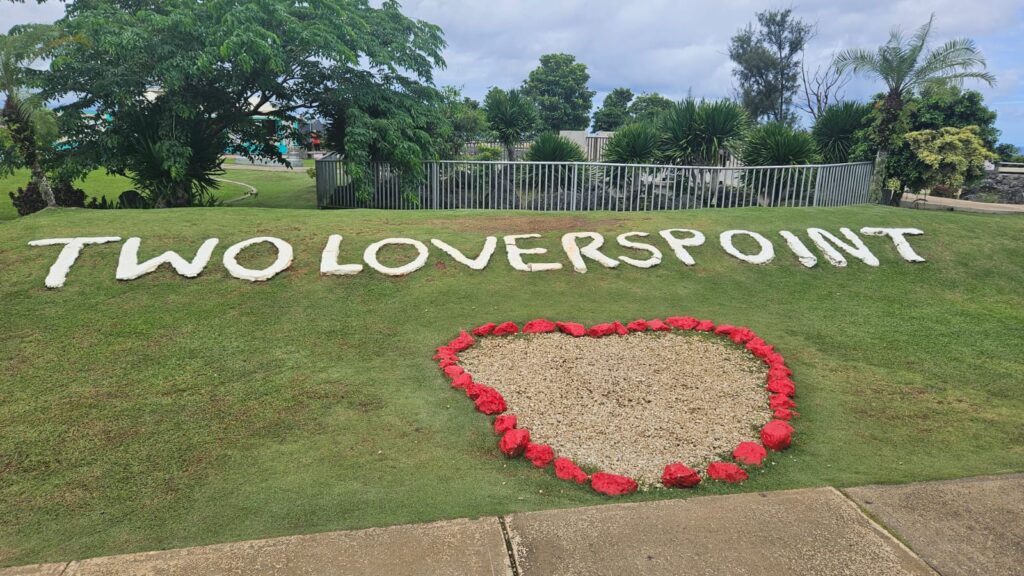
We saw grass inscriptions with hearts and visited a shop selling Hello Kitty Polynesian figures celebrating her 50th birthday.
I bought one and received a hair flower as a birthday gift, which I wore proudly all day.
We also enjoyed cold mango and strawberry juices while taking in the Legendary View.
The cliffs offered breathtaking scenery of Tumon shoreline, turquoise waters, and endless horizons.

Love locks adorned railings, a modern tribute to the ancient legend. The place feels magical and unforgettable.
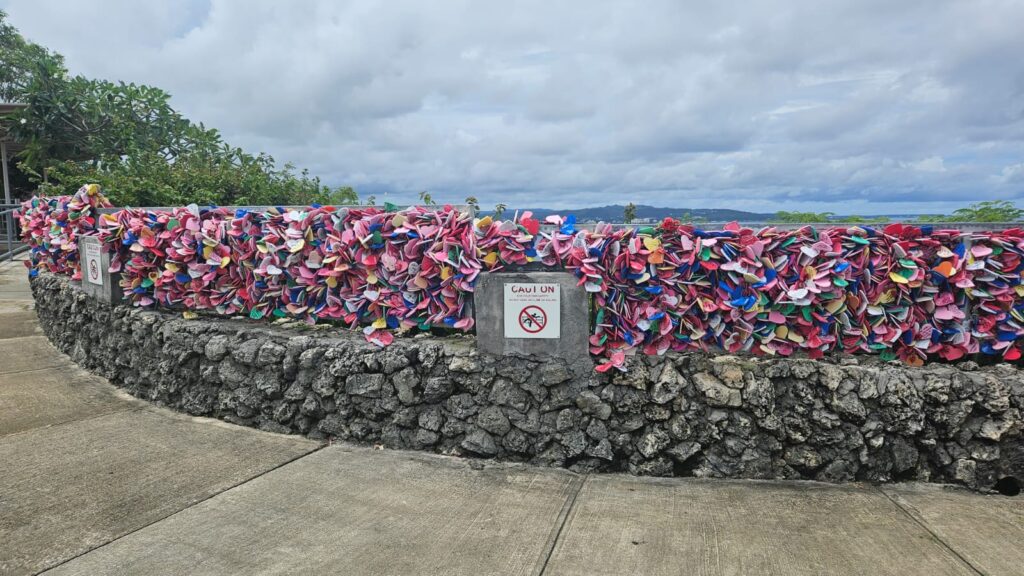
Guam Run Club
On the way, we spotted an old and solid bus stop decorated with paintings reading “Guam Run Club. Established 1970.”
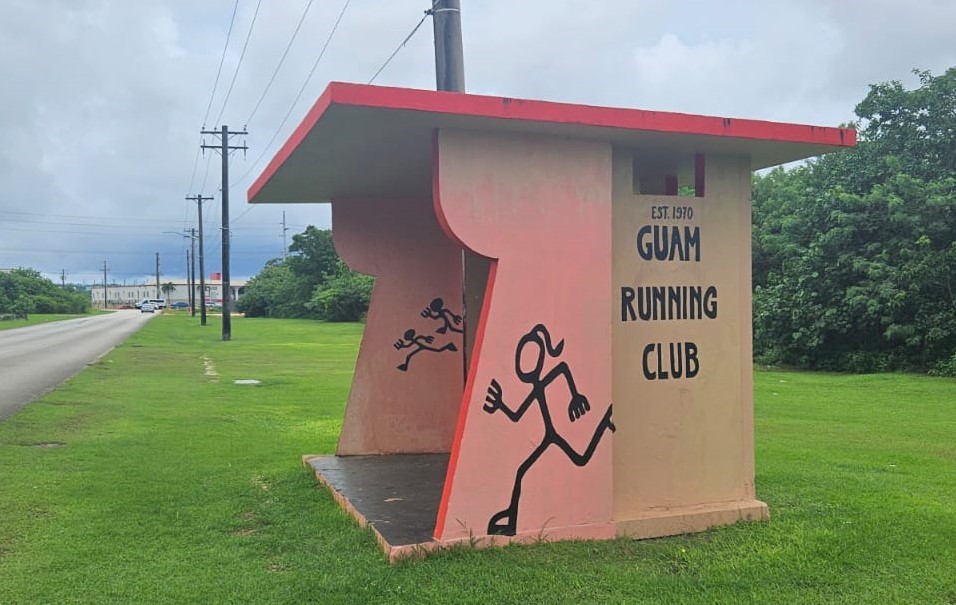
It was too cool to miss, so we asked our driver to stop and took pictures. Seriously, a running club from 1970! 🏃
The stop reminded us of Guam’s long history with local running culture and inspired our morning beach run.
Heading to the Airport 🛫
We arrived at the airport by 7:30pm, passing security quickly with friendly staff.
A lady took our photo in front of US and Guam flags, creating a memorable travel keepsake.
Our flight was at 11:45pm, so we had hours to relax in the empty hall. The airport atmosphere was quiet, with minimal travelers, making it the perfect time to reflect on our Guam adventures.
The day combined history, culture, beaches, snorkeling, and relaxation, making it a full, memorable Pacific experience.
From Tumon Bay to Two Lovers Point, Guam offered breathtaking scenery, cultural insights, and unforgettable running routes.
🏃♀️ The Run 🏃♂️
Early Morning Run Along Tumon Beach 🌅
We set off at 6:30am because Guam gets scorching hot. By 8am it was already 31°C!
After descending a set of stairs, we reached Tumon Beach at first light. It looked incredible.

A hippie-type local was sleeping in a tent surrounded by snorkeling and swimming gear. Other than that, the beach belonged to early risers and crabs.
We saw a few runners and some exercising, but it wasn’t crowded. A woman learned to swim with her instructor, very cute.
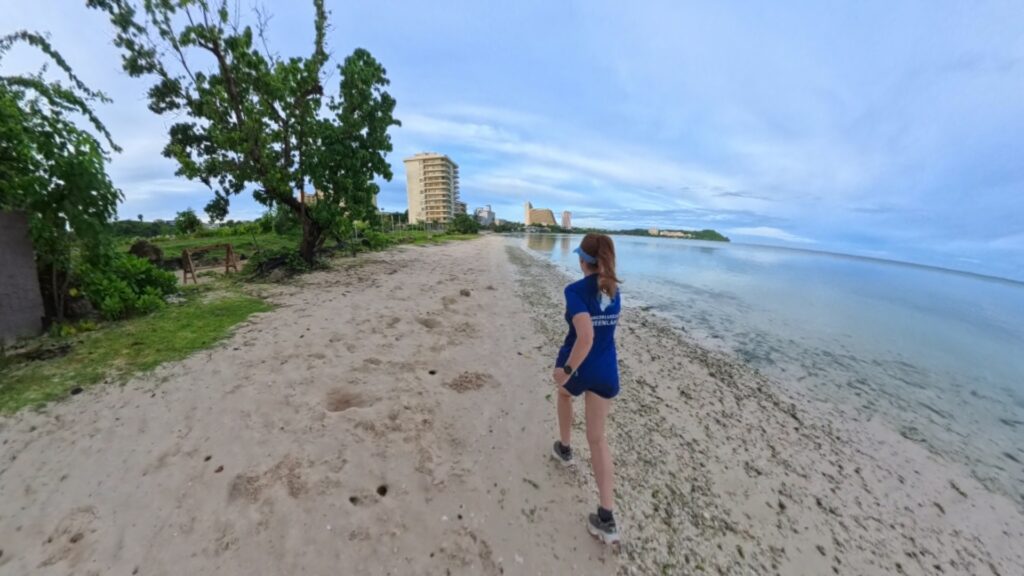
The beach was perfect for running. Low tide and minimal tilt made the white sand firm enough for shoes.
The sand had green material. It wasn’t minerals but marine vegetation. Seaweed like Ulva, seagrass from shallow meadows, and microalgae forming a thin green film.

Tumon Bay is calm and reef-protected, so tides and currents wash these plants ashore, creating distinctive green patches.
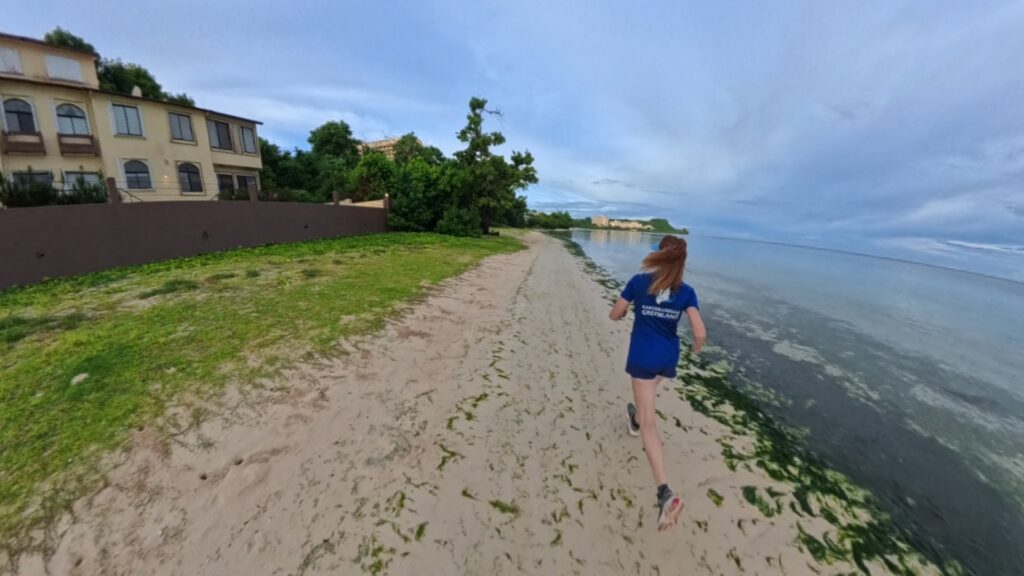
It didn’t bother me while running. No slippery rocks and almost no dogs, except one stray and a couple being walked.
The Pacific looked stunning, turquoise and blue. Big hotels lined the beach, 70s-80s style, weathered from the humid climate.
Discovering a Japanese Pillbox 🏝️
Heading south, we found a tunnel in the rocks. Crawling through, we realized it was a Japanese pillbox!
A war pillbox is a small reinforced concrete military structure built to defend coastlines.

They served as machine-gun nests or observation posts, letting defenders fire while protected from artillery or attacks.
Many were built during World War II, especially in the Pacific, to defend against Allied invasions.
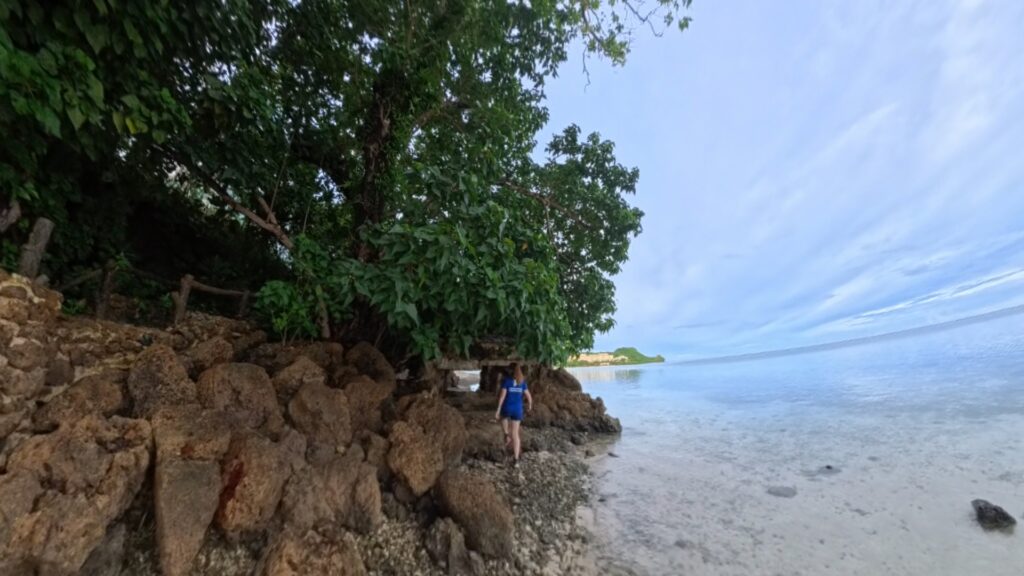
This pillbox was built during Japan’s occupation of Guam (1941–1944), sitting at the waterline facing the bay.
It was meant to control beach approaches and guard against U.S. amphibious landings.
Today it’s a weathered historic relic, partly covered in vegetation, still accessible to visitors walking along the sand.
It stands as a reminder of Guam’s role in the war and is part of its cultural heritage.

Exploring it added history and adventure to our run, making the route unforgettable.
Ypao Beach Park: A Shaded Oasis 🌴
After the pillbox, we arrived at Ypao Beach Park, also called Gov. Joseph Flores Memorial Park.
The park was lush, green, and perfect for running. Coconut palms and tropical almond trees shaded the area.
Tall ironwoods acted as natural windbreaks, and colorful flame trees burst into red blooms in summer.
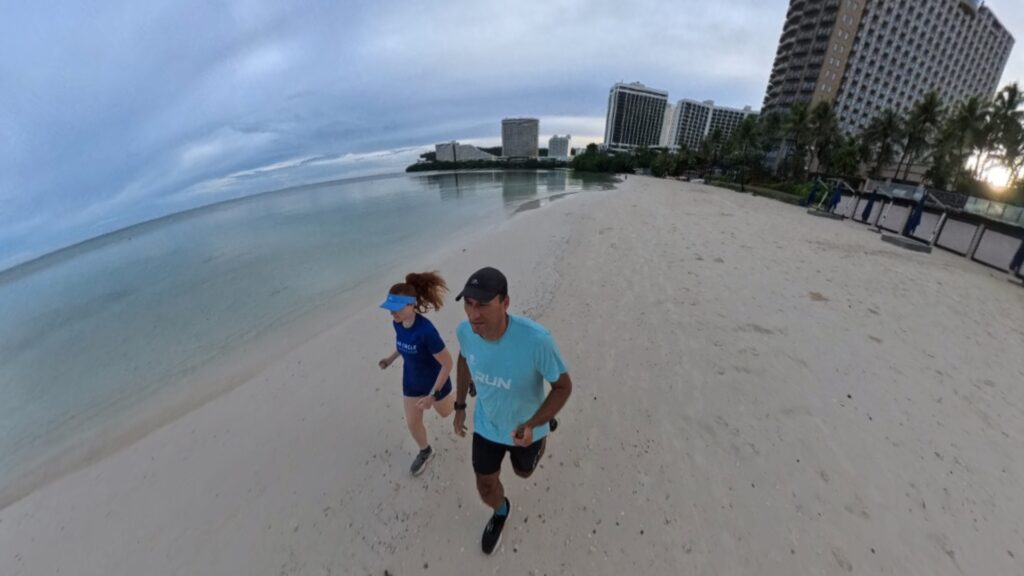
The cool atmosphere made running relaxed and refreshing. I loved every moment.
We saw an “I love Ypao” painted by a lifeguard tower, Pacific-style Baywatch!
Nearby, another sign said “I love Guam,” adding charm to the park. Locals ran, walked, or exercised with vibrant energy.
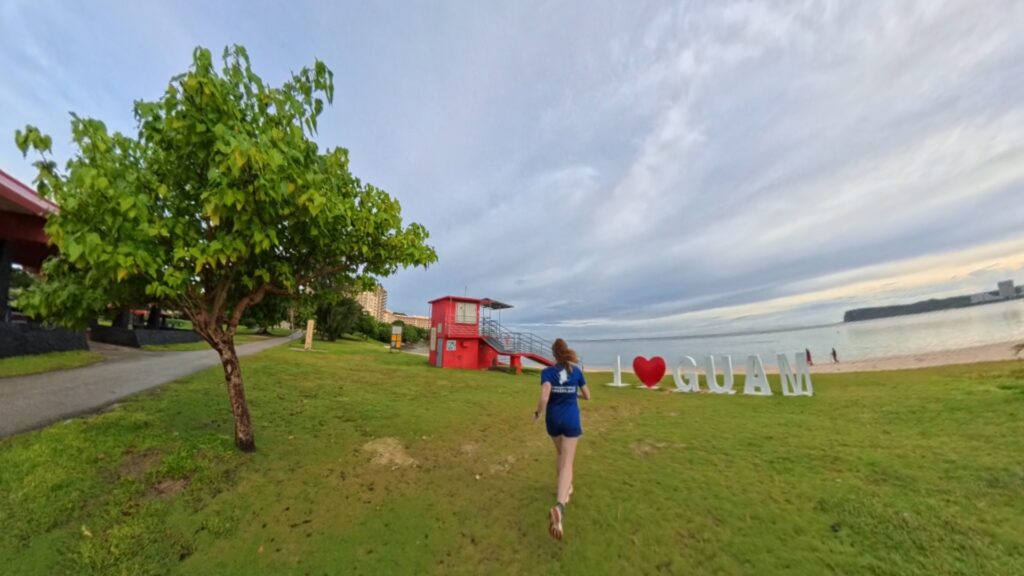
The route continued near the Hilton Hotel. Beautiful trees and butterflies with black-and-white patterns caught my eye.
We even spotted a typical US school bus like the one we took in Boston.
We turned around at a “private road” sign. Roger was annoyed since Pacific runs usually allow free exploration.
Completing the 7k Adventure 🏃
On our way back, we retraced our route and climbed stairs atop the war pillbox for a final view.
The sun was rising, the temperature increasing, and the scenery was stunning.
Tumon and Ypao beaches offered white sand, turquoise waters, lush greenery, and historic surprises.
The mix of calm bay, marine vegetation, Japanese pillbox, and park trees made running memorable.
In total, we completed a 7k run, discovering nature, history, and local charm.
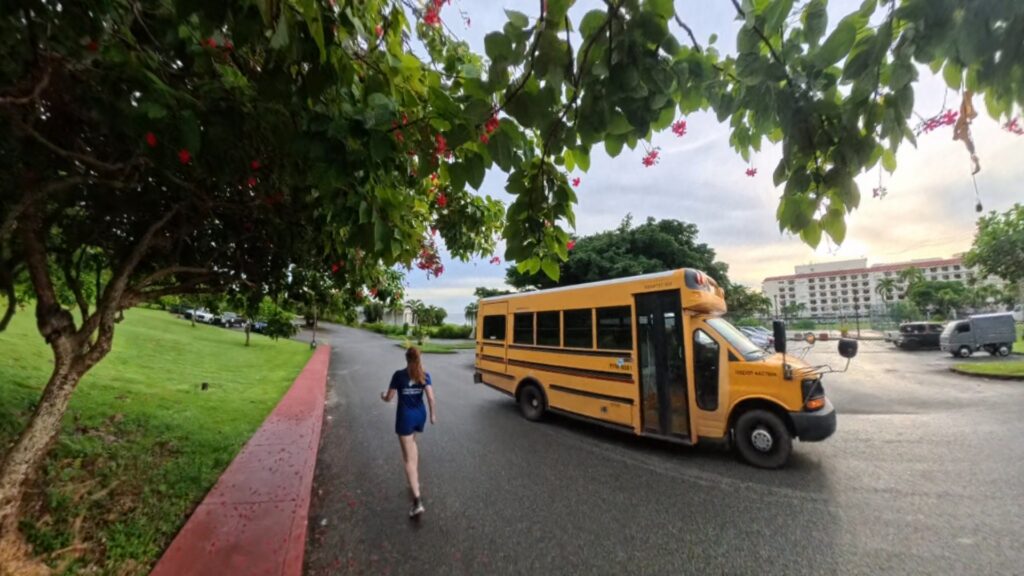
It was the perfect start to a day in Guam, combining exercise, exploration, and early-morning beauty.
🍽️ What to Eat Before and After Running in Guam
Running in Guam is an adventure for your legs—but also for your taste buds!
🏃🍽️ After logging miles across beaches, hills, and historic trails, you’ll find that food on the island isn’t just fuel—it’s part of the cultural experience. Guam’s cuisine is a flavorful fusion of Chamorro traditions, Spanish influence, Filipino zest, and American comfort, with plenty of tropical ingredients and fire-grilled magic.
Whether you’re carboloading before a long run or craving some serious post-run protein, the island offers plenty of delicious options that satisfy both hunger and curiosity. Just be warned: you might find yourself running a few extra miles just to justify that second plate of BBQ ribs or coconut pancakes!
Carboloading 🍌 (Run-Prep Fuel)
- Red rice & fresh fruit – A hearty combo of sticky rice cooked in achote oil, served with sweet tropical fruit—slow-burning carbs for long runs.
- Coconut pancakes – Fluffy and fragrant, topped with local coconut syrup to energize your legs with a sweet twist.
- Guam-style pretzel pizza bites – Portable, savory, and carb-rich—ideal for an early morning tempo run.
Protein Recovery 💪 (Post-Run Power-Ups)
- Kelaguen (chicken or tuna) – Finely chopped and marinated in lemon, onions, and chili, served on tortillas—lean protein with a spicy kick.
- BBQ short ribs drenched in fina’denne’ sauce – Smoky, savory, and deeply satisfying, a perfect reward after major mileage.
- Fresh fish sashimi at beachside grills – From ocean to plate, rich in protein and omega-3s—light yet nourishing.

Useful information
🏃 Running in Guam, USA, Oceania.
👟 Urban: bring shoes for asphalt.
✅ The run featured soft white sand and calm, turquoise waters, making it visually stunning and easy on the feet. 🌊
✅ Discovering the hidden Japanese WWII pillbox added history and adventure, turning an ordinary run into a memorable exploration. 🏝️
⚠️ The humidity was intense, making the run physically demanding despite the early start. ☀️

Map
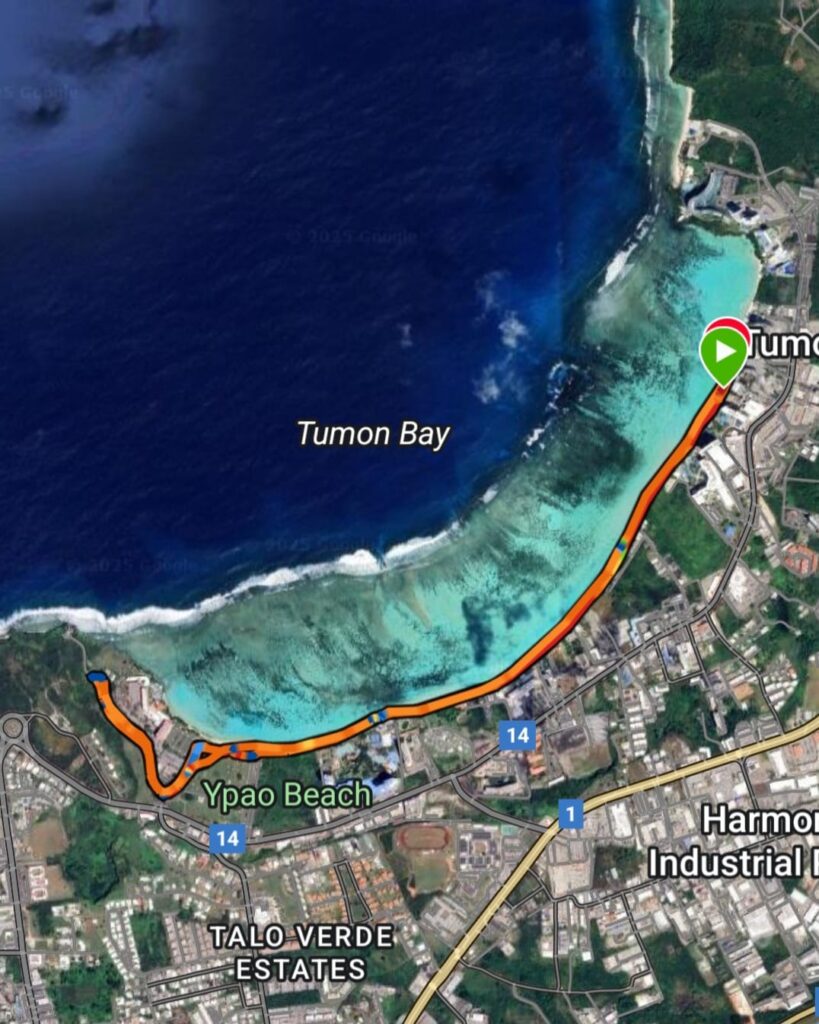
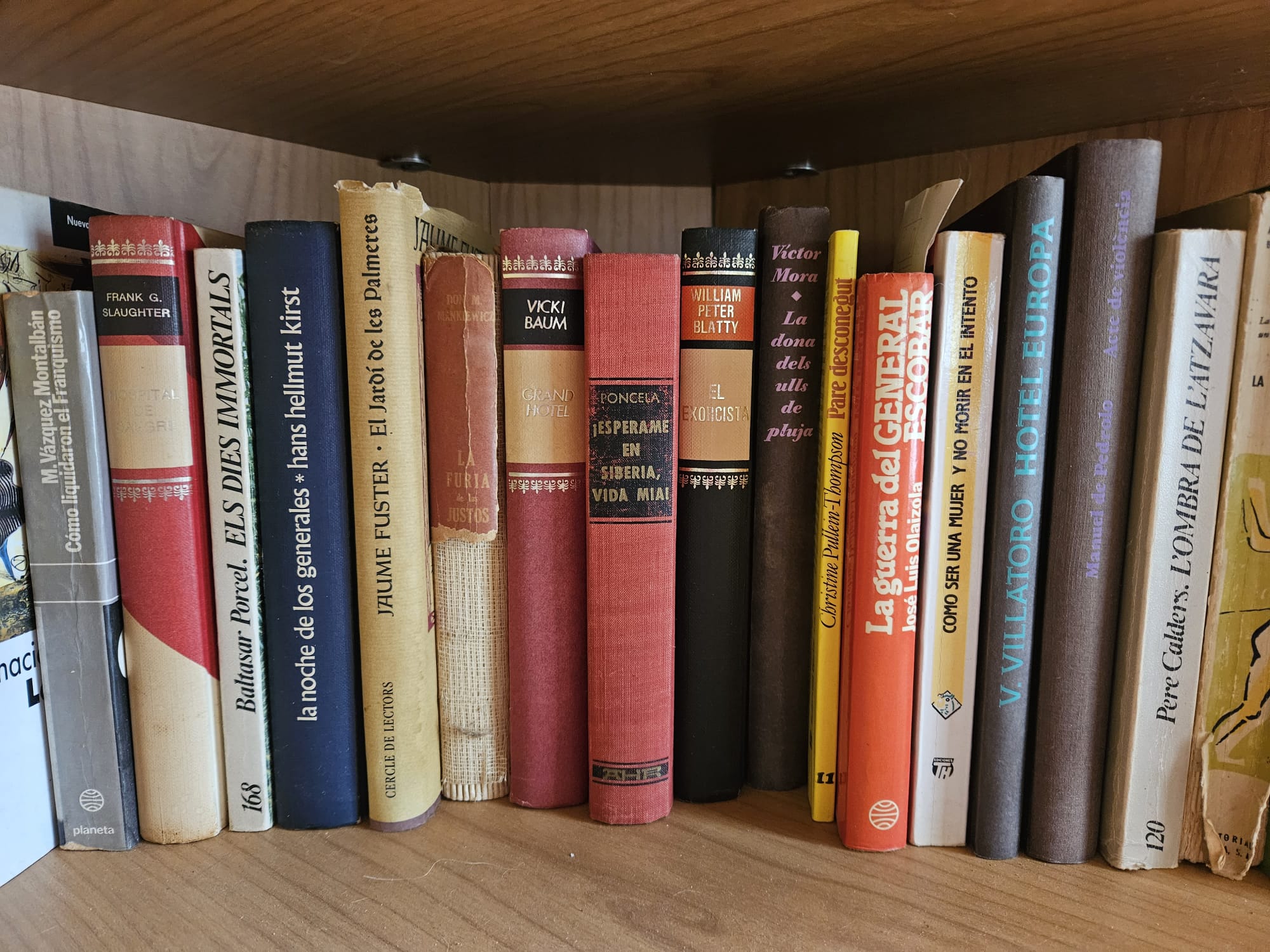
One book
📘 “Mariquita – revisited”, by Chris Perez Howard
A compelling chamoru‑authored novel, originally published in 1982 and updated in 2019, that revisits the wartime experience of the author’s mother during the Japanese occupation. Through photos, letters, and evocative prose, it brings a woman’s perspective to Guam’s most tumultuous era.
This book gives a deeply personal connection to Guam’s history, helping you appreciate the island’s resilience as you run past WWII ruins and war‑memorial trails. It’s a runner’s guide to emotional endurance.
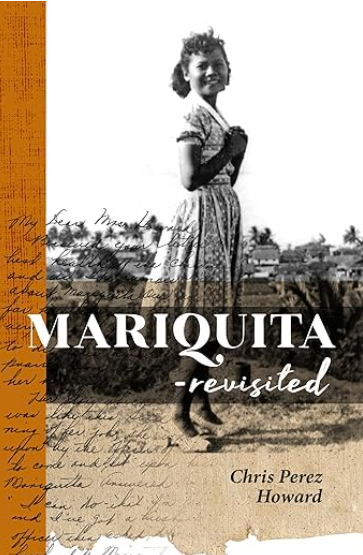
Plot: Mariquita, first published in 1982, has become the most widely read novel about the CHamoru experience during World War II on Guam. In the book, author Chris Perez Howard chronicles his mother’s vibrant life before the War, her enduring strength during the Japanese occupation of the island, and her tragic death at the end of it. In this updated edition of the classic, Perez Howard revisits the story and adds more details, photos, and letters. It is a continuing tribute to his mother whose legacy lives on in the memories of all who read it.

To know more…
📖🎬 More books & movies about Guam and why they matter
- 📘 Chamorru Legends: A Gathering of Stories by Teresita Lourdes Perez — vibrant folktales in English and Chamoru for cultural immersion.
- 📘 From Unincorporated Territory (hacha) by Craig Santos Perez — award‑winning poetry on identity and colonialism.
- 🎬 Guam: Battle for American Island (documentary) — a historical overview of the 1944 battle, rich in archival footage.
- 🎬 Pacific War (TV series) — episodes covering Guam’s liberation, useful for context before trail explorations.
